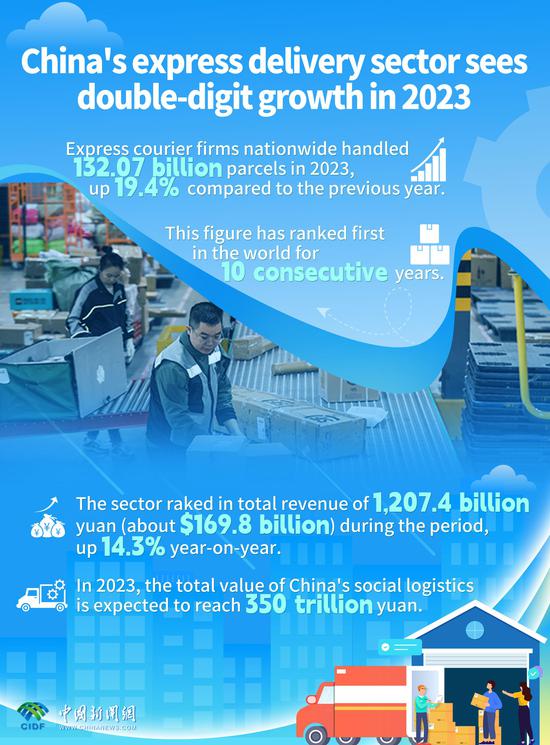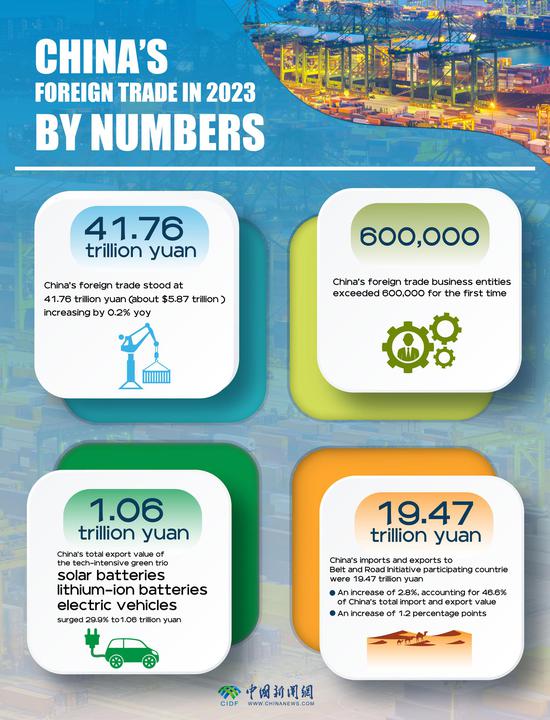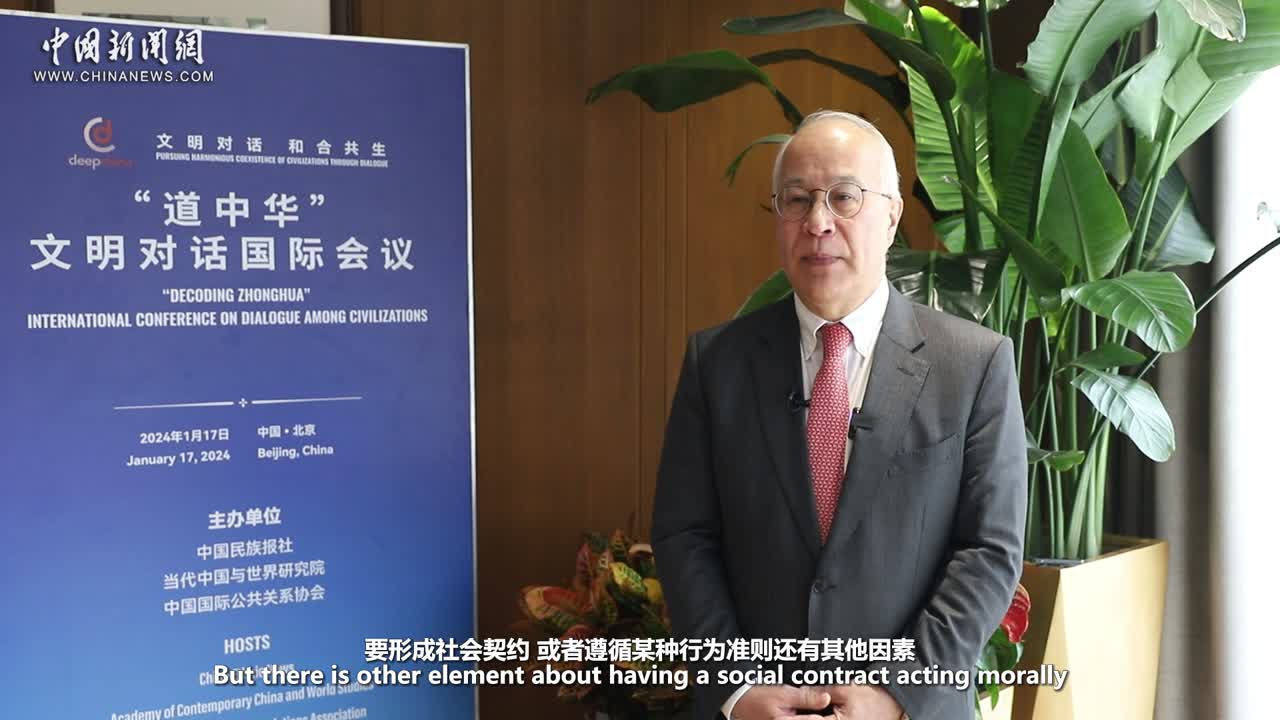
Workers unload freight for SF Express at Xingdong Airport, Nantong, Jiangsu province. (Photo/China Daily)
China's express delivery industry saw a robust growth in 2023, with express courier firms nationwide handling 132.07 billion parcels, an increase of 19.4 percent year-on-year, and ranking first in the world for the 10th consecutive year, as shown by data recently released by the State Post Bureau.
It has taken just 10 years for the number of China's express delivery orders to realize a huge leap from 10 billion to more than 100 billion. China's express delivery business already accounts for more than 60 percent of the world's total.
Express delivery volume is an important indicator to observe China's economy. The consumer market in China creates on average 350 million deliveries each day. China's final consumption expenditure contributed 82.5 percent to its economic growth in 2023, raising economic growth by 4.2 percentage points. The number of internet users in China now exceeds 1 billion, and the online retail sales of goods account for 27.6 percent of the country's total retail sales of consumer goods.
Meanwhile China's industrial supporting capabilities and supply chain advantages provide a strong guarantee for the fast production and the quick response of Chinese enterprises to overseas demand. China's cross-border e-commerce exports increased by 19.6 percent in 2023 compared with 2022 against the backdrop of the downturn in global trade.
China has built the world's largest high-speed rail and expressway networks and world-class port clusters. It has an efficient express delivery service network that can handle more than 700 million orders a day on average. Such a well-connected transportation infrastructure and highly efficient logistics system are like "blood vessels" that ensure the smooth flow of goods and reduce costs for enterprises.
China's express delivery sector has become a shining symbol of China, and its booming business reflects the recovering of the country's production and consumption, which in turn promotes the further release of demand.


















































 京公网安备 11010202009201号
京公网安备 11010202009201号